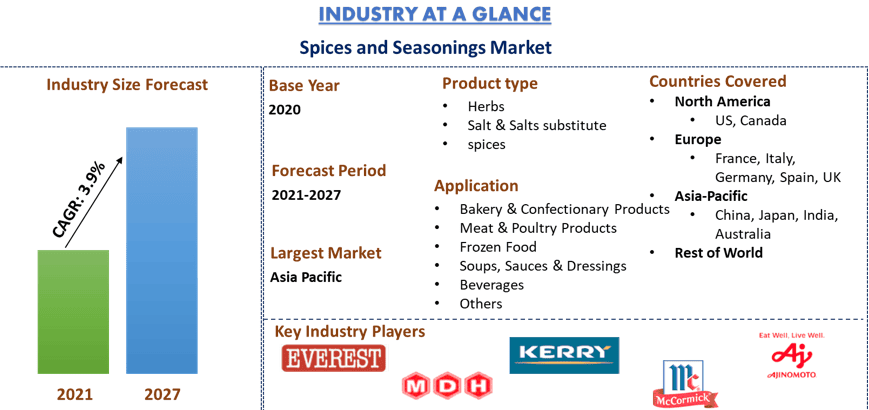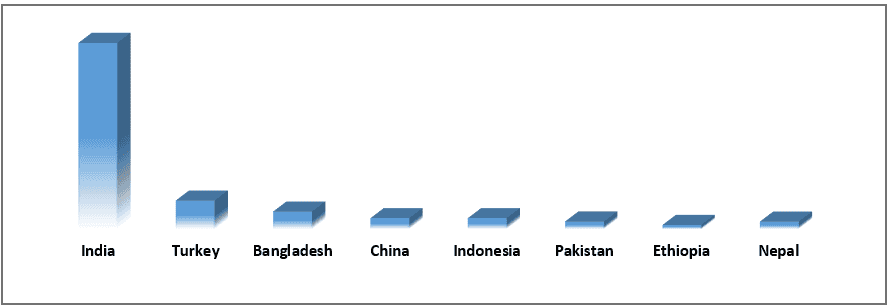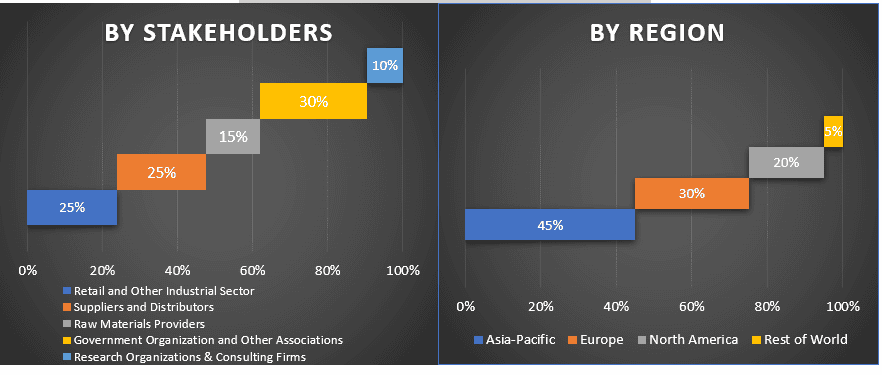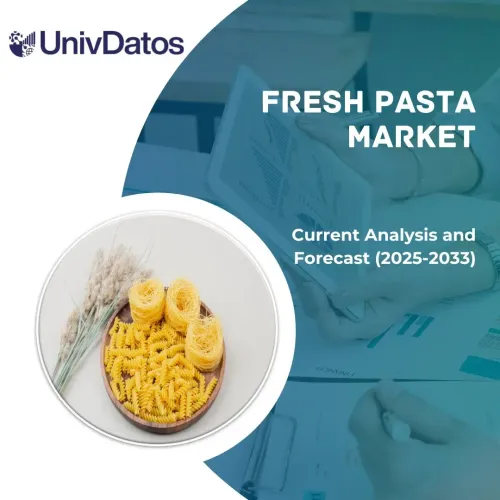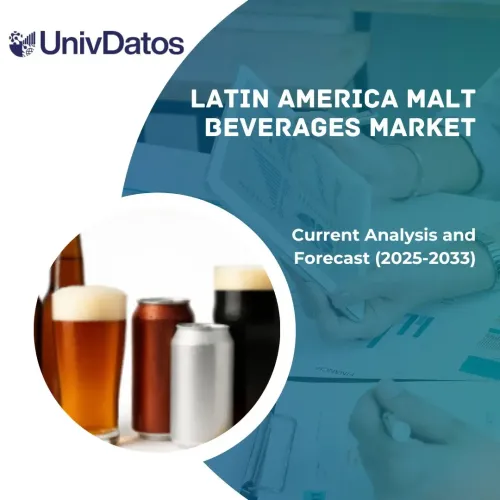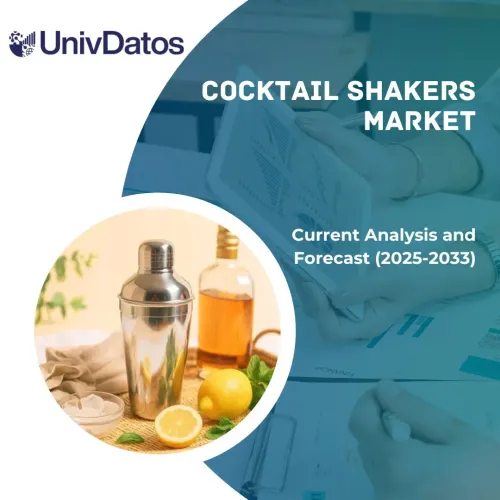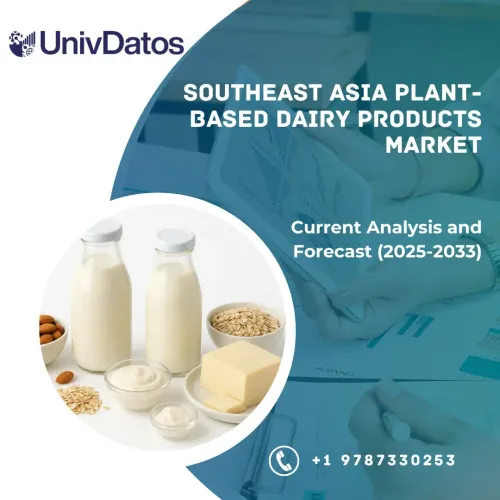- Home
- About Us
- Industry
- Services
- Reading
- Contact Us
Spices and Seasoning Market: Current Analysis and Forecast (2021-2027)
Emphasis on Product Type [Herbs (Rosemary, Fennel, Garlic, Mint, Parsley, Oregano, Others), Salt and Salt Substitutes, Spices (Pepper, Ginger, Cinnamon, Cumin, Turmeric, Cardamom, Coriander, Cloves, Others)]; Application (Bakery and Confectionery, Meat & Poultry, Frozen Food, Soup, Sauces and Dressing, Beverages, Others); and Region & Country.
Spices and Seasoning Market was valued at US$ 25 billion in 2020 and is expected to grow at a CAGR of 4% over the forecast period (2021-2027).Spices and Seasoning give aroma, color, and enhances the flavor of the food. Depending on various types of cuisines and the origin of spices and seasonings, they are available in different forms. Different types of spices and seasonings such as garlic, parsley, mint, cardamom, coriander, cloves, ginger, pepper, cinnamon; etc. give a different flavor, aroma, and taste to the food. An increase in per capita spending of consumers on food and the rising popularity of exotic cuisines are the significant factors driving the growth of the global spices and seasonings market. For instance, Japanese restaurant has observed a significant increase in its growth owing to its light seasoning and unique flavored cuisines. As per Global Japanese Cuisine, the number of Japanese restaurants increased in numbers from 24,000 in 2006 to 117,568 in 2017.
The increase in international travel, immigration, and globalization has drawn consumer’s attention towards ethnic food. For instance, the U.S. retail sales of ethnic food increased from USD 11 billion in 2013 to USD 12.5 billion in 2018. These ethnic foods mostly included Mexican, Asian & Italian cuisine. The inclination of the population across the globe has increased the demand for several indigenous spices and seasonings.
In 2018, India was the leading spices-producing country in the world, measured by the volume of spices produced. In that year, India accounted for 1,920,000,000; which is more than the volume of all spices produced in the other seven leading countries in the world combined.
Spices Producing Countries Worldwide, By Volume, 2019
Everest Spices, Kerry Group, MDH, Ajinomoto Co. Inc., Ariake Japan Co., Ltd., Associate British Food PLC, Mc Cormick Company Inc., Dohler Group, Kikkoman Corporation, and Olam International are some of the prominent players operating in the Global Spices and Seasonings Market. Several M&As along with partnerships have been undertaken by these players to facilitate customers with hi-tech and innovative products.
Insights Presented in the Report
“Amongst product type, salts and salts substitutes segment holds the major share”
Based on product type, the market is fragmented into herbs, salts & salts substitute, and spices. The herbs segment is further bifurcated into rosemary, fennel, garlic, mint, parsley, oregano, and others. The spices is further segmented into pepper, ginger, cinnamon, cumin, turmeric, cardamom, coriander, cloves, and others. The salt segment generated revenue of USD XX billion in 2020. The market is expected to grow at a CAGR of XX% during the forecast period to reach a market valuation of USD XX million by 2027F owing to its consistent increase in demand in almost all types of dishes. For instance, as per a study in 2019, salt consumption in China was highest with 10.9 gm of salt per person in a day, followed by Italy with 9.7 gm and India with 9.7 gm of salt consumed by an adult in a day.
“Amongst application, meat & poultry is anticipated to grow at the highest CAGR during the analyzed period”
Based on the application, the market is fragmented into bakery & confectionery products, meat & poultry products, frozen food, soups, sauces & dressings, beverages, and others. Owing to the shift in preference of consumers for the ethnic flavors and demand improvement in the quality, the meat & poultry segment grabbed the major market and dominated the market. The meat & poultry segment generated a revenue of USD XX million in 2020. For instance, garlic, pepper, and ginger are added to meat products to enhance their taste and aroma.
“Asia-Pacific signifies one of the largest markets of Spices and Seasonings Market”
For a better understanding of the market dynamics of the Spices and Seasonings market, a detailed analysis was conducted for different regions across the globe including North America (United States, Canada, and Rest of North America), Europe (Germany, France, Italy, Spain, United Kingdom and Rest of Europe), Asia-Pacific (China, Japan, India, Australia, and Rest of APAC), and Rest of World. Asia pacific constitutes a major market for the spices and seasonings industry. Consumers in the regions incorporate spices and seasonings extensively in their daily meals, Asians have been using different spices and seasonings in their cuisines as a flavor enhancer and, also for their medicinal properties for decades. For instance, Foodservice reached USD 3,179 billion in 2019, in which Asia-Pacific covered 45% of the total.
Reasons to buy this report:
- The study includes market sizing and forecasting analysis validated by authenticated key industry experts
- The report presents a quick review of overall industry performance at one glance
- The report covers an in-depth analysis of prominent industry peers with a primary focus on key business financials, product portfolio, expansion strategies, and recent developments
- Detailed examination of drivers, restraints, key trends, and opportunities prevailing in the industry
- The study comprehensively covers the market across different segments
- Deep dive regional level analysis of the industry
Customization Options:
Spices and Seasonings Market can further be customized as per the requirement or any other market segment. Besides this, UMI understands that you may have your own business needs, hence feel free to connect with us to get a report that completely suits your requirements.
Table of Content
Analyzing the historical market, estimation of the current market, and forecasting the future market of the Global Spices and Seasoning Market were the three major steps undertaken to create and analyze the adoption of Spices and Seasoning in the different cuisines across major regions globally. Exhaustive secondary research was conducted to collect the historical market numbers and estimate the current market size. Secondly, to validate these insights, numerous findings and assumptions were taken into consideration. Moreover, exhaustive primary interviews were also conducted, with industry experts across the value chain of the Spices and Seasoning sector. Post assumption and validation of market numbers through primary interviews, we employed a top-down/bottom-up approach to forecast the complete market size. Thereafter, market breakdown and data triangulation methods were adopted to estimate and analyze the market size of segments and sub-segments the industry pertains to. Detailed methodology is explained below:
Analysis of Historical Market Size
Step 1: In-Depth Study of Secondary Sources:
Detailed secondary study was conducted to obtain the historical market size of the Spices and Seasoning through company internal sources such as annual report & financial statements, performance presentations, press releases, etc., and external sources including journals, news & articles, government publications, competitor publications, sector reports, third-party database, and other credible publications.
Step 2: Market Segmentation:
After obtaining the historical market size of the Spices and Seasoning market, we conducted a detailed secondary analysis to gather historical market insights and share for different segments for major regions. Major segments included in the report are product type and application. Further country-level analyses were conducted to evaluate the overall adoption of Spices and Seasoning in every region.
Step 3: Factor Analysis:
After acquiring the historical market size of different segments and sub-segments, we conducted a detailed factor analysis to estimate the current market size of Spices and Seasoning. Further, we conducted factor analysis using dependent and independent variables such as increasing demand for ethnic cuisine and fast-food chains. A thorough analysis was conducted for demand and supply-side scenarios considering top partnerships, merger and acquisition, business expansion, and product launches in the spices and seasonings industry across the globe.
Current Market Size Estimate & Forecast
Current Market Sizing: Based on actionable insights from the above 3 steps, we arrived at the current market size, key players in the Spice and Seasoning market, and market shares of the segments. All the required percentage shares split, and market breakdowns were determined using the above-mentioned secondary approach and were verified through primary interviews.
Estimation & Forecasting: For market estimation and forecast, weights were assigned to different factors including drivers & trends, restraints, and opportunities available for the stakeholders. After analyzing these factors, relevant forecasting techniques i.e., top-down/bottom-up approach was applied to arrive at the market forecast about 2027 for different segments and subsegments across the major markets globally. The research methodology adopted to estimate the market size encompasses:
- The industry’s market size, in terms of value (USD) and the adoption rate of spices and seasoning across the major markets domestically
- All percentage shares, splits, and breakdowns of market segments and sub-segments
- Key players in the Spices and Seasoning market in terms of services offered. Also, the growth strategies adopted by these players to compete in the fast-growing market
Market Size and Share Validation
Primary Research: In-depth interviews were conducted with the Key Opinion Leaders (KOLs) including Top Level Executives (CXO/VPs, Sales Head, Marketing Head, Operational Head, and Regional Head, Country Head, etc.) across major regions. Primary research findings were then summarized, and statistical analysis was performed to prove the stated hypothesis. Inputs from primary research were consolidated with secondary findings, hence turning information into actionable insights.
Split of Primary Participants in Different Regions
Market Engineering
Data triangulation technique was employed to complete the overall market estimation and to arrive at precise statistical numbers of each segment and sub-segment of the Spices and Seasoning market. Data was split into several segments & sub-segments post studying various parameters and trends in the areas of product type, and application of the Spices and Seasoning market.
Main Objective of the Spices and Seasonings Market Study
The current & future market trends of Spices and Seasoning were pinpointed in the study. Investors can gain strategic insights to base their discretion for investments from the qualitative and quantitative analysis performed in the study. Current and future market trends were determined the overall attractiveness of the market at a regional level, providing a platform for the industrial participant to exploit the untapped market to benefit as a first-mover advantage. Other quantitative goals of the studies include:
- Analyze the current and forecast market size of Spices and Seasoning in terms of value (USD). Also, analyze the current and forecast market size of different segments and sub-segments
- Segments in the study include areas of product type and application
- Define and analysis of the regulatory framework for the Spices and Seasoning industry
- Analyze the value chain involved with the presence of various intermediaries, along with analyzing customer and competitor behaviors of the industry
- Analyze the current and forecast market size of the Spices and Seasoning market for the major region
- Major regions studied in the report include North America (the United States and Canada), Europe (Germany, France, Italy, Spain, and United Kingdom), Asia-Pacific (China, Japan, India and Australia), and the Rest of World
- Company profiles of the Spices and Seasoning market and the growth strategies adopted by the market players to sustain in the fast-growing market
- Deep dive regional level analysis of the industry
Related Reports
Customers who bought this item also bought

